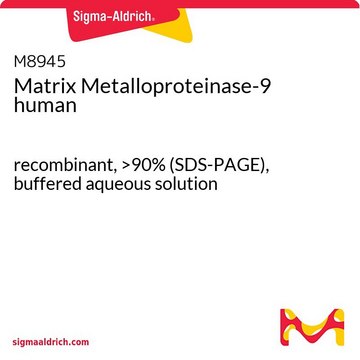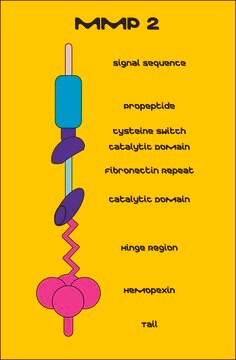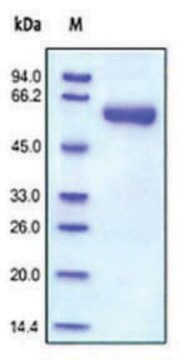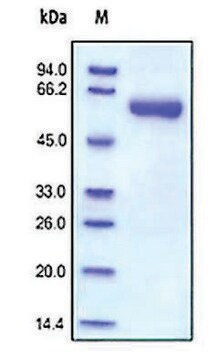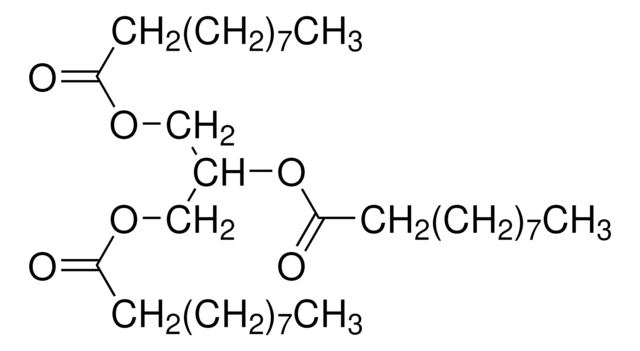SAE0078
MMP-9 pre-activated human
recombinant, ≥1,300 pmol/min/μg, expressed in HEK 293 cells
Sinónimos:
GELB, GELBCLG4B, Gelatinase, Gelatinase B, MANDP2, MMP-9, Matrix Metalloproteinase-10, Type IV collagenase
About This Item
Productos recomendados
biological source
human
Quality Level
recombinant
expressed in HEK 293 cells
assay
≥95% (SDS-PAGE)
form
liquid
mol wt
calculated mol wt 66 kDa
observed mol wt 82 kDa by SDS-PAGE (The protein migrates as a 82 kDa protein on SDS-PAGE due to glycosylation)
concentration
≥50 μg/mL
UniProt accession no.
application(s)
cell analysis
shipped in
dry ice
storage temp.
−20°C
Gene Information
human ... MMP(4318)
General description
Biochem/physiol Actions
As with most MMPs, MMP-9 is secreted as an inactive pro-protein which is activated when cleaved by extracellular proteinases. MMP-9 can be cleaved (and thus activated) in vitro using 4-Aminophenylmercuric acetate (APMA), Cat. No. A9563. MMP-9 is secreted from neutrophils, macrophages, and a number of transformed cells, and is the most complex family member in terms of domain structure and regulation of its activity.
Structurally, MMP9 maybe be divided into five distinct domains: a pro-domain which is cleaved upon activation, a gelatin binding domain consisting of three contiguous fibronectin type II units, a catalytic domain containing the zinc binding site, a proline rich linker region, and a carboxyl terminal hemopexin like domain.
As with most MMPs, MMP-9 is secreted as an inactive pro-protein which is activated when cleaved by extracellular proteinases. This product was cleaved and activated in vitro using 4-Aminophenylmercuric acetate (APMA), Cat. No. A9563.
Other Notes
Physical form
Storage Class
12 - Non Combustible Liquids
wgk_germany
WGK 3
flash_point_f
Not applicable
flash_point_c
Not applicable
Elija entre una de las versiones más recientes:
Certificados de análisis (COA)
¿No ve la versión correcta?
Si necesita una versión concreta, puede buscar un certificado específico por el número de lote.
¿Ya tiene este producto?
Encuentre la documentación para los productos que ha comprado recientemente en la Biblioteca de documentos.
Global Trade Item Number
| Número de referencia del producto (SKU) | GTIN |
|---|---|
| SAE0078-50UG | 4061835507429 |
Nuestro equipo de científicos tiene experiencia en todas las áreas de investigación: Ciencias de la vida, Ciencia de los materiales, Síntesis química, Cromatografía, Analítica y muchas otras.
Póngase en contacto con el Servicio técnico